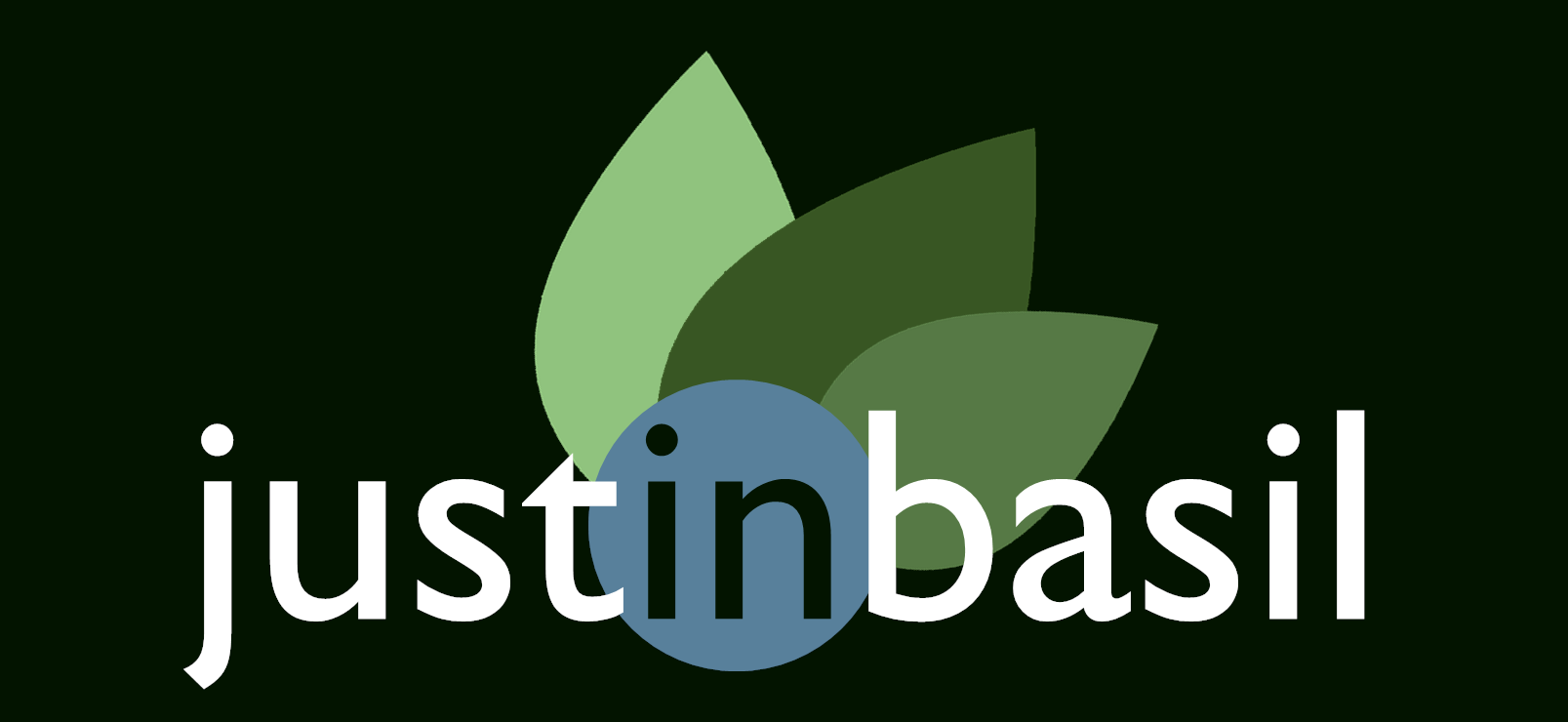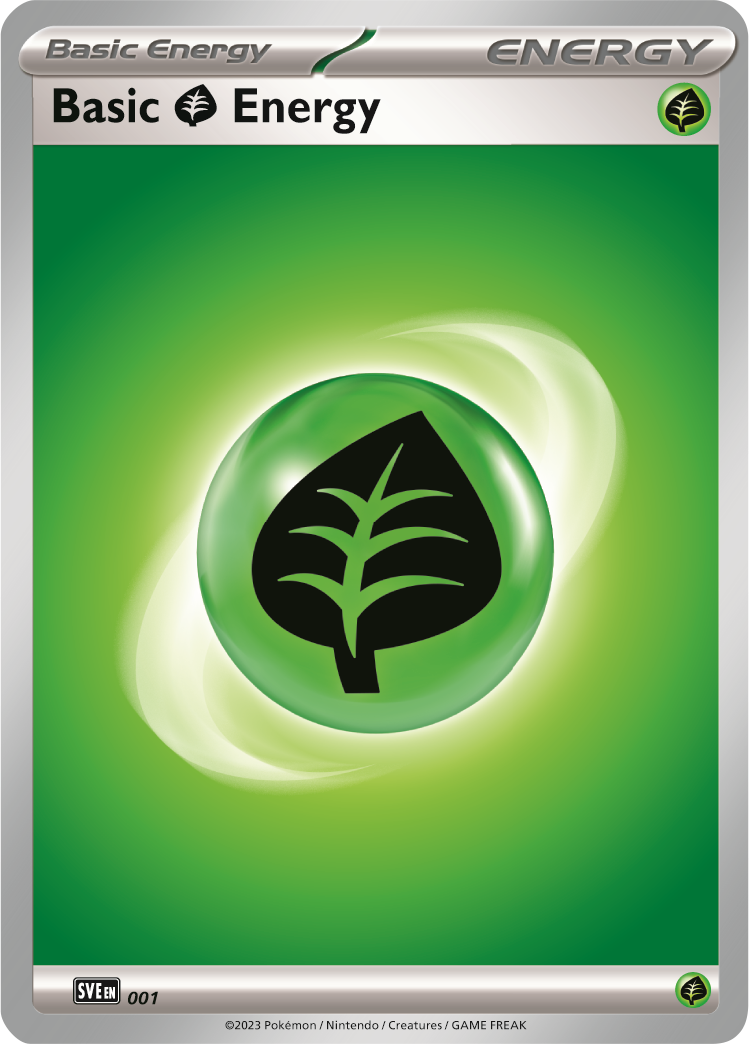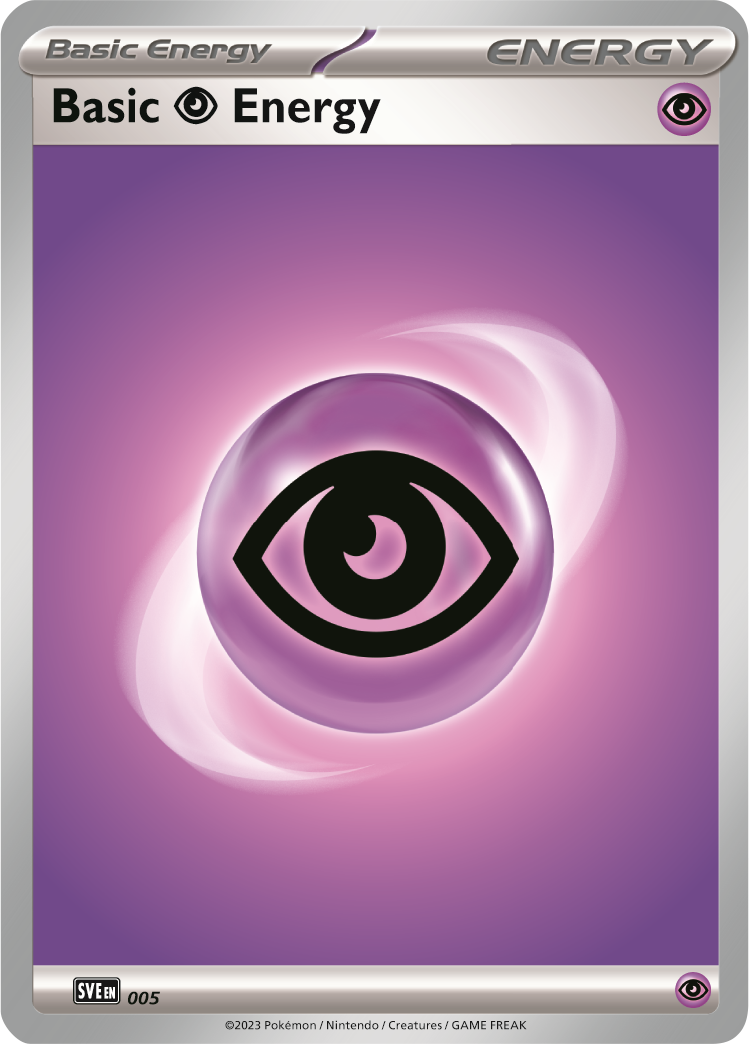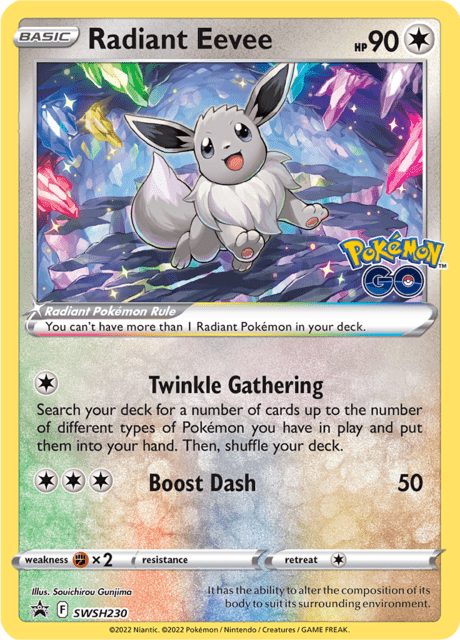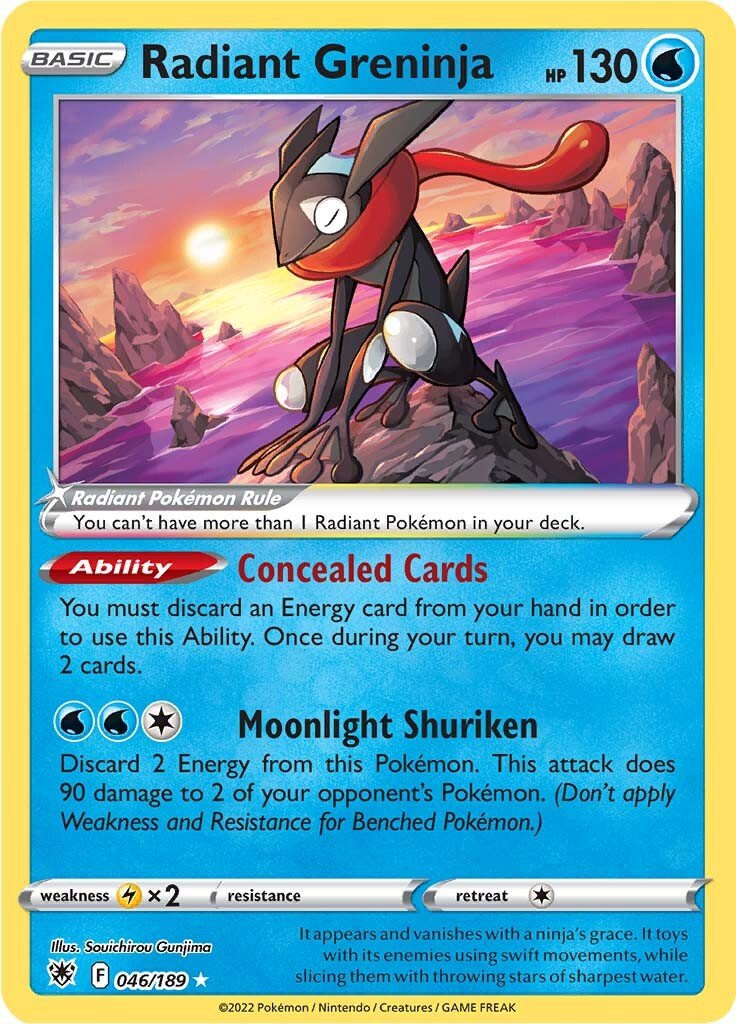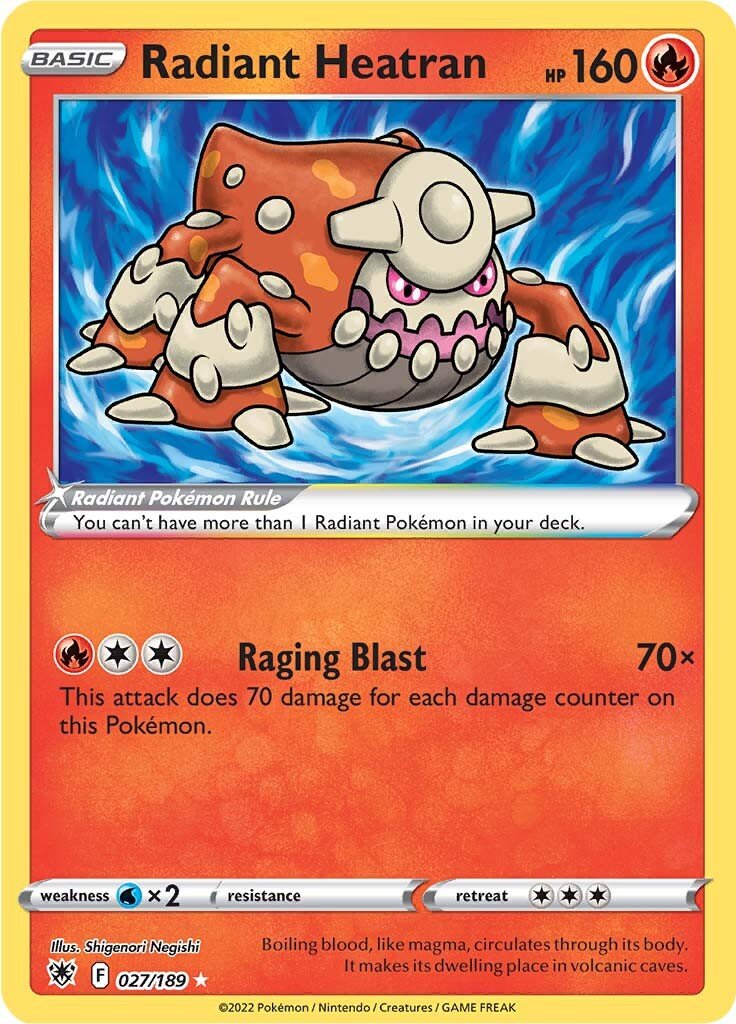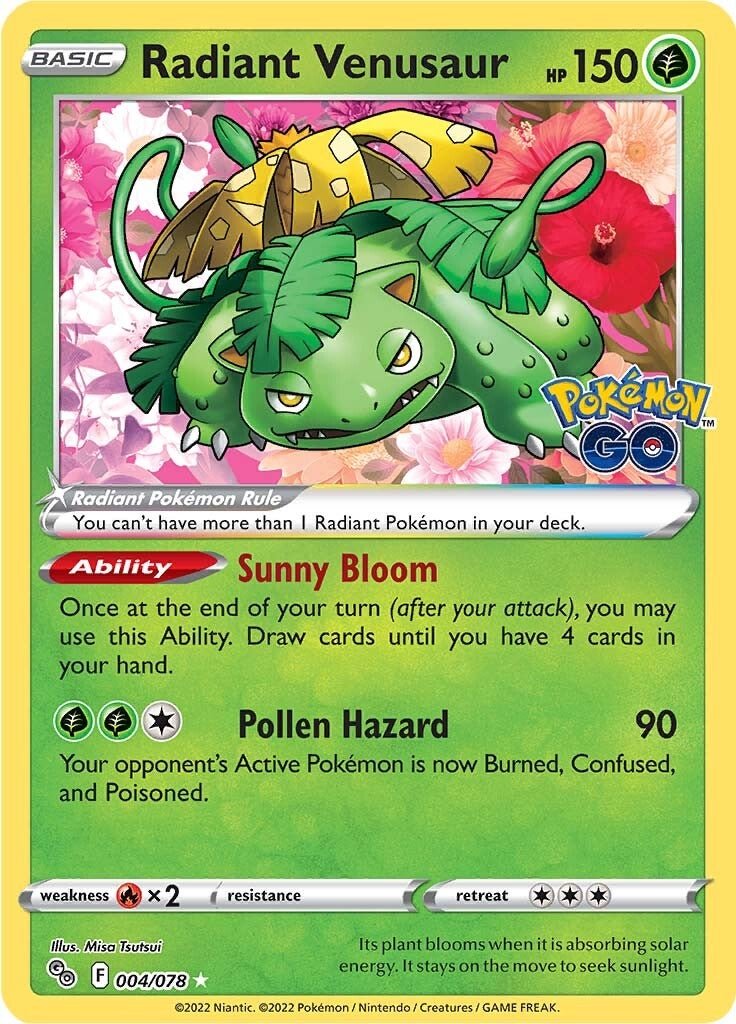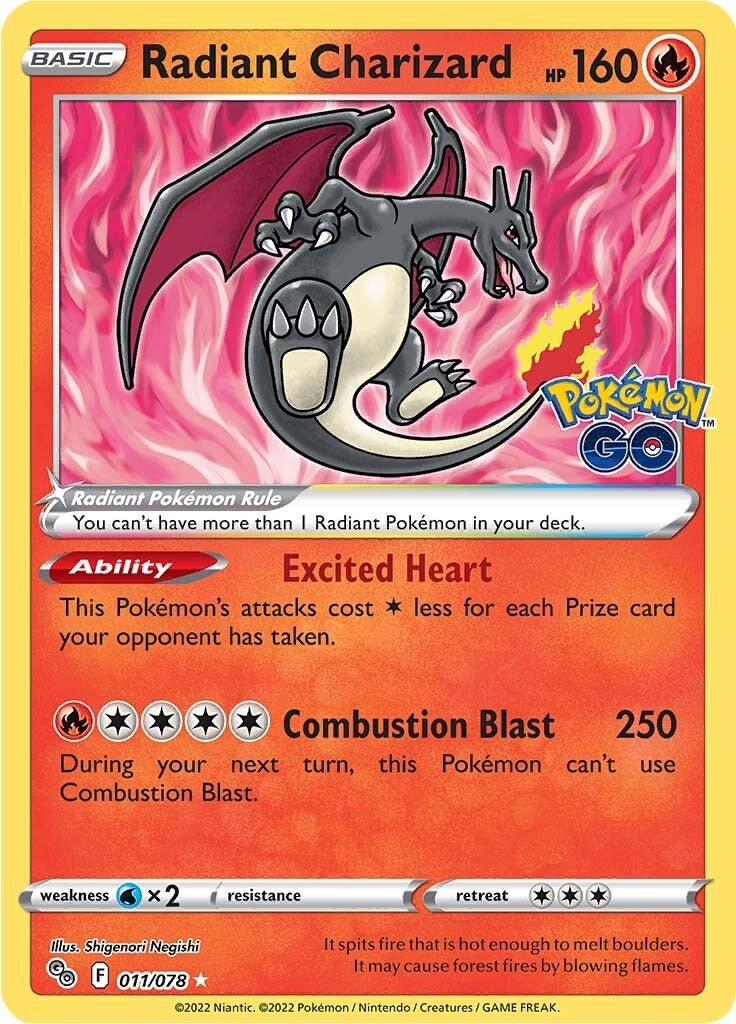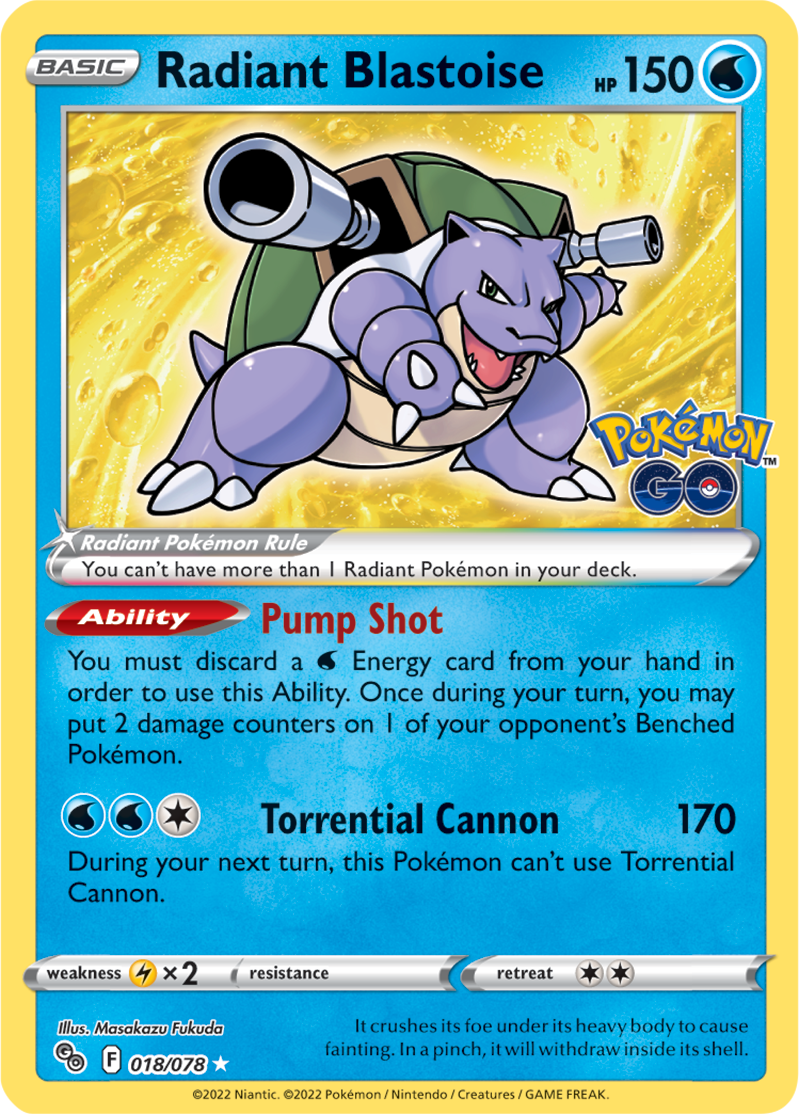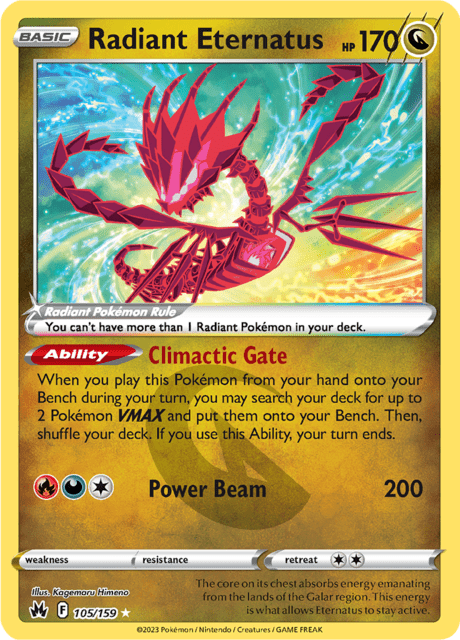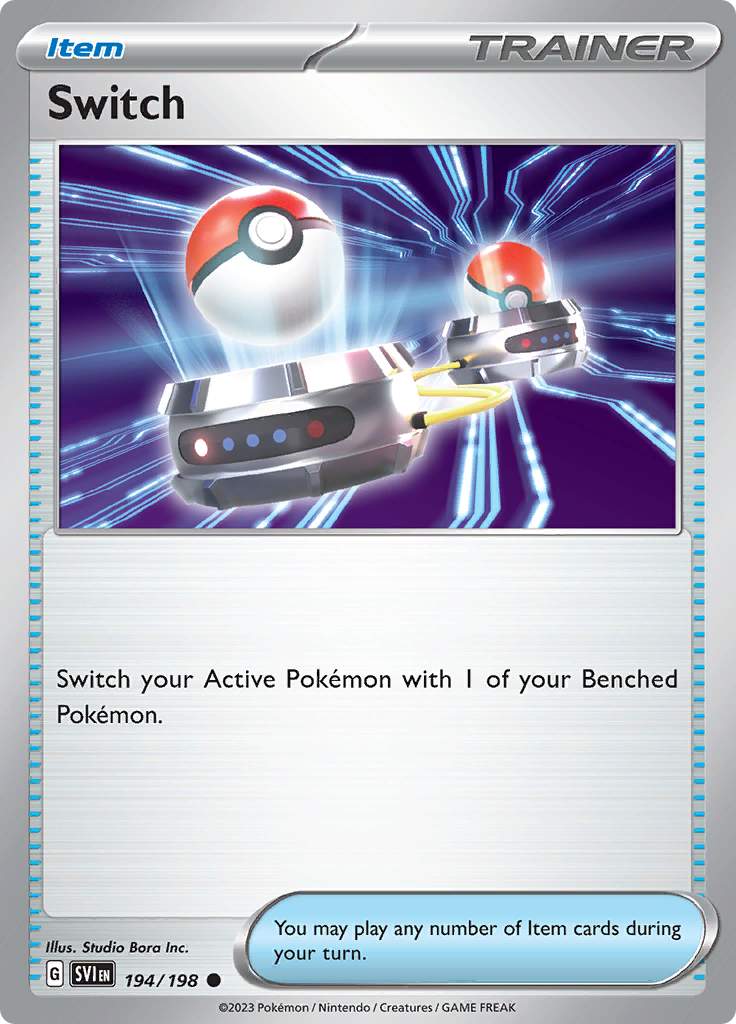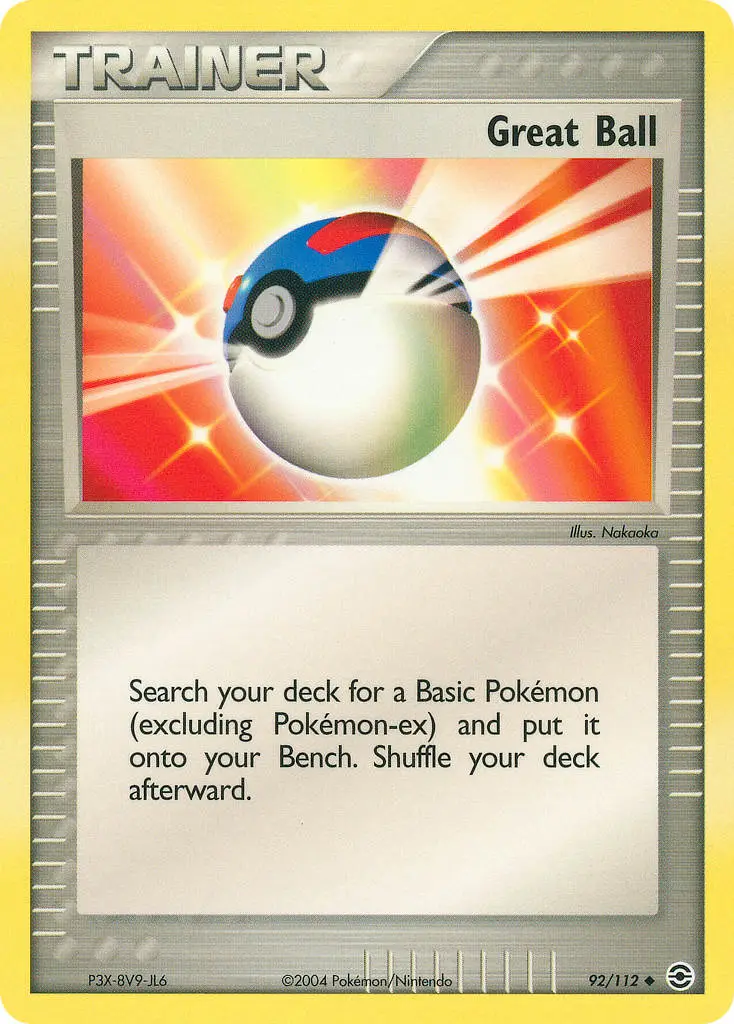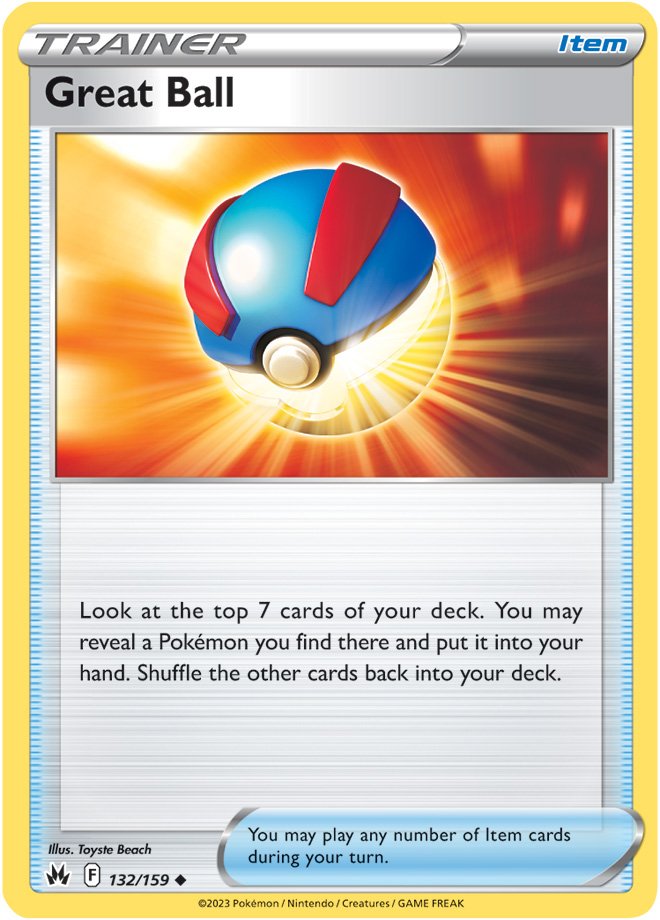Limits - What You Can and Can’t Put into Your Deck
Before we begin looking at what you can—and what you should—put into your deck, it’s important to understand what can’t be put into a deck.
In the Pokémon Trading Card Game, a deck is made up of exactly sixty cards, including at least one Basic Pokémon. These sixty cards have to include all Pokémon, all Trainer cards, and all Energies you need to execute your strategy. In the Pokémon Trading Card Game, there are no side boards or side decks—every card in your strategy counts toward the sixty cards in your deck, so you’ll need to pick your sixty cards wisely.
In addition to a deck needing to be exactly sixty cards and contain at least one Basic Pokémon, there are a few other rules about the cards in your deck.
The Rule of Four
With just three exceptions in the Standard Format, you can only have up to four copies of a card with the same name in your deck. This means that a deck can only contain up to four copies of a card called “Judge”, a Supporter card, and up to four copies of “Switch”, an Item card. This is why a set of four of the same card is commonly referred to as a Playset of that card—it’s the maximum number of copies of that card that can be included in a deck.
The Rule of Four also applies to cards featuring Pokémon, though the rules about a Pokémon’s name are a little bit more complicated. The excerpt about Pokémon names below comes from the Official Pokémon Rulebook.
What does and doesn't count for a Pokémon's name?
- Some Pokémon cards have extra information after their name, such as a Level or a symbol like l. A Pokémon's name changes how you can evolve or play certain cards. Level is not part of a Pokémon's name:
- Gengar, Gengar LV. 43, Gengar LV. 44, and Gengar LV.X all have the same name.
- Symbols at the end of a Pokémon's name are part of a Pokémon's name:
- Alakazam, Alakazam 4, and Alakazam * all have different names from each other.
- However, d (Delta Species) is not part of a Pokémon's name. Aerodactyl and Aerodactyl d (Delta Species) have the same name.
- An owner or form name in a Pokémon's name is part of the Pokémon's name:
- Meowth, Alolan Meowth, and Rocket's Meowth have different names.
When evolving, the "evolves from" Pokémon name must match the Pokémon being evolved. So Graveler can evolve from Geodude, or Geodude LV. 12, but not Brock's Geodude.
This rule means that a deck can have four copies of Zacian, four copies of Zacian V, and four copies of Zacian V-UNION in the same deck! That’s twelve different cards with Zacian in the name!
First Exception to the Rule of Four - Basic Energy
In the Standard Format, the first exception to the “Rule of Four” is Basic Energy.
Basic Energy cards are cards that have “Energy” printed on the top-left part of the card, but have no text explaining any additional effect like a Special Energy Card would provide. Unlike Basic Energy Cards, Special Energy cards are limited by the Rule of Four.
A deck can include up to fifty-nine of any Basic Energy card (provided the sixtieth card in the deck is a Basic Pokémon). In the Standard Format, there are eight Basic Energy cards:
A Note on Basic Fairy Energy
Although Fairy Energy is also a Basic Energy card, Fairy Energy is not legal in the Standard format.
Second Exception to the Rule of Four - Radiant Pokémon
Whereas you can have up to 59 copies of any basic Energy in your deck, Radiant Pokémon are a bit more restrictive. Not only can you have just a single copy of your Radiant Pokémon, you can only include one Radiant Pokémon of any kind. This means that if you include Radiant Greninja ASR 46, you can’t also include Radiant Gardevoir LOR 69 in your deck.
Third Exception to the Rule of Four - ACE SPECs
Like Radiant Pokémon, ACE SPECs are extremely powerful cards that are limited to just a single copy of any one ACE SPEC in your deck. This means that if you include Prime Catcher, you can’t also include Unfair Stamp in your deck.
What’s Not Allowed
Proxies and other Fake Cards
Counterfeit and other fake cards, like Orica or custom-made cards, are not legal for play and should not be included in any deck. If you suspect a card or cards you own may be counterfeit, there are a few resources available to you to make it easier to verify that your card is a counterfeit, including the section on Identifying Fake Pokémon Cards in this deck building guide and the videos below.
Proxies—placeholder printouts of real cards—are not legal for play in any sanctioned tournament. Your local Pokémon League may permit the use of proxies during open play for testing purposes, but in all other instances, proxies should be treated exactly the same as other fake cards.
Altered Cards, Damaged Cards, and World Championship Cards
Any cards altered from how they would be obtained from official Pokémon Trading Card Game merchandise are not allowed in sanctioned play. The document Play! Pokémon Tournament Rules Handbook states that “Cards that have undergone post-production alteration, [including] autographs, artwork, or other such amendments to the surface of the card, not including any official stamps applied by TPCi [are disallowed].”
Like altered cards, damaged cards are also not legal for tournament play if their damage is substantial enough to potentially be visible during play. If a card you’re intending to use in a deck has any bends, creases, or tears, it’s best to set it aside and replace it with a copy of that card that is in better condition. Damaged cards can lead to accusations of having Marked Cards—or cards in a deck that have been made easily identifiable—even without seeing the card’s front—for the purpose of facilitating cheating.
Cards with alternate card backs, including World Championship cards, are also not legal for tournament play. World Championship cards cards can also be identified by a silver-colored signature on the card’s artwork, as in the picture of Mewtwo LV. X from the World Championship deck Stallgon, played by David Cohen, a finalist in the Seniors Division at the 2009 World Championships.
Other cards that specifically mention that they are not tournament legal on the card itself or on their product’s packaging are also not legal in sanctioned Play! Pokémon tournaments.
Cards in Foreign Languages
The languages of cards legal for play in your deck will vary based on where you are playing the Pokémon Trading Card Game. In the United States, for example, only cards printed in English are legal for play at most Premier Events—or tournaments that award Championship Points, including League Challenges, League Cups, and Regional Championships.
For International Championships and for the World Championships, players are permitted to use English cards in addition to cards in any other languages that are legal in their home country. For all other events, players must build their decks to contain only cards legal in the rating zone of the event they are attending.
Below is a pair of tables excerpted from the document Play! Pokémon Tournament Rules Handbook that list which languages are legal in which region—and any additional languages that are legal for play in specific countries.
Legal Languages for Premier Events, by Rating Zone
| Rating Zone | Legal Languages |
| North America | English |
| Latin America | English, Spanish |
| Europe | English, French, German, Italian, Portuguese, Spanish |
| Oceania | English |
| Russia | English, Russian |
| South Africa | English |
Additional Legal Languages for Premier Events, by Country
| Country | Additional Legal Languages |
| Canada | French |
| Argentina, Brazil, Chile, Colombia, Ecuador, Panama, Paraguay, Peru |
Portuguese |
Standard Legality, Reprints, and Banned Cards
Every card that is used in your deck must be legal in the format you’re building your deck for. Cards from the sets below are most likely to be legal in the Standard format, though there are a few exceptions in a few of the sets. To ensure you’re using a card that’s legal in the Standard format, look for cards with the “F” regulation mark or later printed on the bottom-left part of the card.
 Brilliant Stars
Brilliant Stars Astral Radiance
Astral Radiance Pokémon GO
Pokémon GO Lost Origin
Lost Origin Silver Tempest
Silver Tempest Crown Zenith
Crown Zenith Scarlet & Violet (SVI)
Scarlet & Violet (SVI) Paldea Evolved (PAL)
Paldea Evolved (PAL) Obsidian Flames (OBF)
Obsidian Flames (OBF) Scarlet & Violet—151 (MEW)
Scarlet & Violet—151 (MEW) Paradox Rift (PAR)
Paradox Rift (PAR) Paldean Fates (PAF)
Paldean Fates (PAF) Temporal Forces (TEF)
Temporal Forces (TEF) Twilight Masquerade (TWM)
Twilight Masquerade (TWM) Shrouded Fable (SFA)
Shrouded Fable (SFA) Stellar Crown (SCR)
Stellar Crown (SCR)
Each of the sets above has a regulation mark of F or later. Regulation Marks can be found on any card released since Sword & Shield base set. Cards released prior to this do not have a regulation mark and are likely not legal in the Standard format. However, it is possible to include cards that are not a part of these sets—and that do not have a Regulation Mark—and still have a deck that is legal in the Standard format.
Previous Prints
As mentioned in the introduction of this guide, Reprints are cards that were printed in the past and have been printed again in a new set, often with new artwork. Typically, these cards have the same text as their original printing or other previous printing. Sometimes the wording of the card’s text will change slightly, but its effect remains unchanged. When a card like these has been reprinted in a Standard-legal set, like Switch below, it is reasonably safe to assume that previous prints of the card are also legal again in the Standard format.
The F regulation block, first introduced with Brilliant Stars, is the first regulation block with cards legal in the 2024 Standard format.
Errata
Sometimes, older cards with the same name as a card printed in a Standard-legal set are issued an errata that changes their official text. Great Ball RG 92 below has a completely different effect printed on the card than Great Ball CRZ 132—the version of Great Ball that is in our Crown Zenith set, which is a current Standard-legal set. However, Great Ball RG 92 has an official errata that changes its text to match that of the Great Ball from Crown Zenith, making the Great Ball from EX FireRed & LeafGreen also legal for play in the Standard format. These changes to card text are expected to be known by all participants in a tournament, so it’s a good idea to brush up on card errata before participating in a large tournament. You can review a list of official errata on Pokemon.com. The Pokémon Company International also puts up a post detailing official rule changes, new card bans, and any new errata on the Thursday before pre-release events begin for a new set.
A Note on Reprints without Errata
Sometimes, a card with the same name as an older card is printed, but the text is different enough that the effect of the card is slightly or completely changed, yet there is no official errata changing the text of the older card. In instances like, these old prints of the card, like Recycle Energy N1 105 below, are not made legal for play again in the Standard format. Sometimes, the differences in wording may be difficult to pick up on as a new player.
With Recycle Energy, the effect has changed because the older version of the card is, at some point, in your discard pile. However, the newer version of the card has wording that prevents it from being put in the discard pile at all. This changes how Recycle Energy interacts with other cards—like Mr. Mime TEU 66 and its ability, Scoop-Up Block. With the older wording, Recycle Energy would return to its player’s hand after the Pokémon it was attached to was knocked out. With the new text, the Recycle Energy gets stuck in the discard pile. (Note that the cards in this example, Recycle Energy and Mr. Mime TEU 66, have both rotated out the Standard format, but their interaction still exists in the Expanded format.)
If you’re unsure about whether a card you’re interested in using from an older set is legal to use, PokéGym has a helpful list that details which cards from previous sets are currently legal to use in the Standard format.
Banned Cards
Mismagius UNB 78 and Bellelba & Brycen-Man CEC 186 were banned in the Standard format prior to their rotating out of the format on 10 September 2021.
It is extremely rare for a card to be banned in the Standard format and there are currently no cards banned in the Standard format. The most recent bans in the Standard format were those of Mismagius UNB 78 and Bellelba & Brycen-Man CEC 186, which have since rotated out of the Standard format. Those cards were banned as of 1 September 2020. Before their ban, the card most recently banned from the Standard format was Lysandre’s Trump Card, which was banned as of 15 July 2015. The set Lysandre’s Trump Card was printed in, Phantom Forces, rotated out of the Standard format on 2 September 2016. Mismagius and Lysandre’s Trump Card remain banned in the Expanded format.
All cards that have not rotated from the Standard Format are legal for play in Standard decks. By contrast, there are handful of cards that make up the ban list for the Expanded format, where the pool of cards is large enough that cards occasionally interact with one another in ways that weren’t intended—including in ways that break the game.
The Pokémon Company International, the company that produces Pokémon cards for the United States and many other regions, maintains a list of banned cards for the Standard, Expanded, and Unlimited formats at Pokemon.com.
Recent Releases—When Do New Cards Become Legal?
In the Pokémon Trading Card Game, new sets become legal for tournament play on the second Friday following the set’s release. This is the second Friday after official commercial release, not the second Friday after early preview events, called prereleases, take place. Although brand new cards like these won’t be tournament-legal right away, local Pokémon Leagues often allow the play of cards from these sets immediately after prerelease, especially during open play.
New promo cards, such as those found in special collections, also become legal two weeks after their release. If you aren’t confident about whether or not a promo card in your deck is tournament legal, you can visit the page Pokémon TCG Promo Card Legality Status on Pokémon’s official website to see when new cards become legal and which promo cards are already legal.
| Helpful Links from this Page |
Pokemon.com
|
